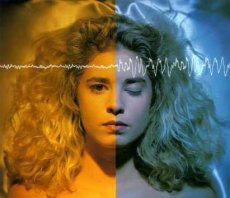New publications
Our biorhythms depend on metabolism in the brain
Last reviewed: 01.07.2025

All iLive content is medically reviewed or fact checked to ensure as much factual accuracy as possible.
We have strict sourcing guidelines and only link to reputable media sites, academic research institutions and, whenever possible, medically peer reviewed studies. Note that the numbers in parentheses ([1], [2], etc.) are clickable links to these studies.
If you feel that any of our content is inaccurate, out-of-date, or otherwise questionable, please select it and press Ctrl + Enter.

The rhythm of our life depends on the change of day and night, but its main driver is not sunlight, but the so-called “internal clock” of the body - circadian rhythms, which are responsible for changes in the intensity of biological processes in the body.
The period of these rhythms is approximately equal to 24 hours. In particular, the dependence of the sleep-wake cycle in humans primarily on internal biorhythms, and not on external factors, has been proven experimentally.
In mammals, circadian rhythms are generated by a tiny region of the brain in the hypothalamus called the suprachiasmatic nucleus.
A new study led by University of Illinois biology professor Martha Gillett has found that the suprachismal nucleus controls metabolism in the brain itself, specifically the production and movement of chemical energy in cells. The researchers focused primarily on a phenomenon known as oxidation-reduction reactions in the suprachismal nucleus tissue of rats and mice.
In oxidation-reduction reactions, molecules give up electrons (are oxidized) and gain them (are reduced). Researchers have found that these processes in the suprachiasmatic nucleus have a 24-hour cycle and, figuratively speaking, open and close communication channels in brain cells.
Professor Martha Gillett explained the significance of the discovery: "The language of the brain is based on electrical signals. This language determines what signals cells in one part of the brain send to each other and to other parts of the brain. The fundamental discovery is that the suprachiasmatic nucleus, without external intervention, has internal metabolic oscillations that activate an internal biological clock."
"It has always been thought that metabolism "serves" brain activity, but we prove that metabolism is part of brain activity. Our study suggests that changes in the metabolic state of cells may be the cause, not the consequence, of neuronal activity."
Along with Martha Gillett, the study included graduate student Yu Yanchun, PhD student Gabby Govindaya, graduate student Ye Jiaying, graduate student Liana Artinian, electrical and computer engineering professor Todd Coleman, chemistry professor Jonathan Swidler, and pharmacology professor Charles Cox. Gillett, Govindaya, Ye, Swidler, and Cox are from the Illinois Beckman Institute.

 [
[